If you read the article, Does a Vegan Diet Lower Blood Pressure? then you know that plant-based diets are endorsed by the major health organizations for their anti-hypertensive properties.
Now, as we saw with many of the studies, much of its hypotensive effects seem to be conferred by way of body weight regulation—i.e. folks on plant-based diets tend to have lower BMIs which, in itself, helps to regulate blood pressure.
However, as you’ll see in the coming paragraphs, there are many plant foods that are thought to have hypotensive properties and are thus likely to account for at least some of the anti-hypertensive effects of vegan and vegetarian diets.
Food Groups
Fruits and Vegetables for Improved Endothelial Function
One sizable meta-analysis included 25 observational studies wherein researchers found consumption of fruits and veggies to be associated with a reduced incidence of hypertension.1
When they compared F/V intakes between the groups with the highest and lowest consumption, the pooled relative risks of hypertension were 0.81 and 0.7 for fruits and veggies, respectively.1
Just so you know, a relative risk of 0.5 would mean that your risk for a certain condition would be 1/2 that of average—i.e. you’d have a 50% lower risk given a certain intervention (a certain threshold of fruit/veggie intake in this case).
The DASH Diet Is More than Sodium Restriction
Ever heard of the DASH diet? DASH stands for Dietary Approaches to Stop Hypertension, a diet devised by the NIH to help prevent and control hypertension. When people think of the DASH diet, their mind often goes to sodium.
However, the DASH diet is a dietary pattern that focuses on fruit and vegetable consumption. While there is a DASH-sodium variation of the diet, the standard protocol doesn’t require restricting sodium beyond standards set forth by the Dietary Guidelines (sodium limits for the general public).
The point I’m making is that people often remember that they’re supposed to restrict sodium if they’re watching their blood pressure, whereas far fewer people seem to think of adding fruits and veggies to their diets in order to control blood pressure.
In dietary trials that controlled sodium intake, the DASH-sodium diet actually conferred a greater BP-lowering effect than non-DASH diets with sodium reduction alone.2,3
I.e. F/V intake plus sodium restriction is more effective than simply restricting sodium.
Why Are Fruits and Veggies Anti-Hypertensive?
Fruits and veggies are rich sources of micronutrients such as magnesium, folic acid, and vitamin C. They also offer phytonutrients such as flavonoids and carotenoids. What do all these nutrients have in common? They’re all thought to lower BP by improving endothelial function.4-7
Certain veggies like beets, spinach, and arugula are packed with nitrates which get converted to nitrites by the bacteria on our tongues, which go on to play a role in nitric oxide (NO) biosynthesis and/or in improving nitric oxide bioavailability. This results in more vasodilation, and lower blood pressure.72
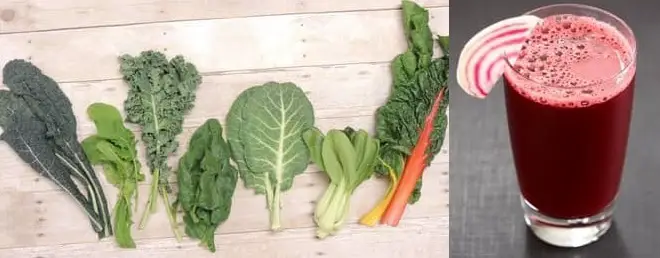
If you really want to maximize the effects of vegetables on blood pressure, shoot for as much as 500 g/day of nitrate-rich greens: spinach, arugula, and swiss chard.
Of course, another popular option is beet juice. You can get a juicer, or just buy the powdered version. I prefer the latter, because it’s more convenient, and gives you the whole plant (in dried, pulverized form) instead of extracting out the nitrates while leaving behind fiber and other nutrients.
Nuts and Seeds
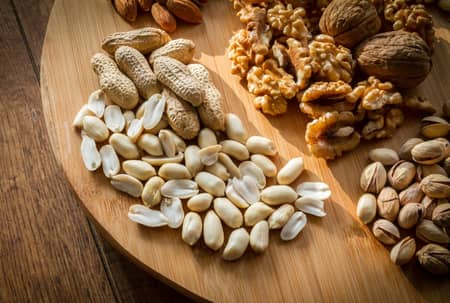
According to Orlich et al., those following plant-based diets tend to consume greater quantities of nuts compared to those following omnivorous diets.8
For example, the AHS-2 study showed vegans to consume 36 g/day of nuts and seeds compared to omnivores who consumed 18.8 g/day (not even a full serving).8
A large meta-analysis including 21 randomized controlled trials (RCTs) looked at the effect of nut consumption on systolic and diastolic BP. What’s more, they included studies involving a wide range of nuts such as almonds, walnuts, cashews, pistachios, hazelnuts, pecans, macadamia nuts, peanuts, and soy nuts.
The author concluded, “Total nut consumption lowered SBP in participants without type 2 diabetes.* Pistachios seemed to have the strongest effect on reducing SBP and DBP. Mixed nuts also reduced DBP.”9
*The authors noted that the reason for this is unknown.
Why Are Nuts and Seeds Anti-Hypertensive?
It seems many components common to this food group contribute to the anti-hypertensive effects observed. These components include:10
- Plant proteins present in nuts
- Dietary fiber
- Phytonutrients such as phytosterols, flavonoids
- Micronutrients—vitamins, magnesium, and potassium.
We’ll be covering all of these components in the coming paragraphs.
Legumes (General)
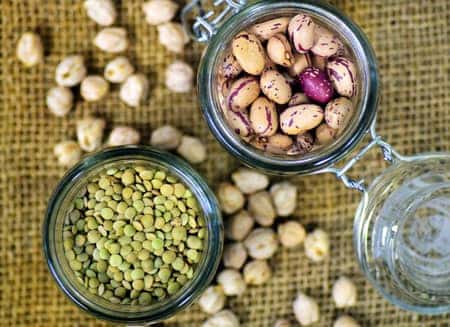
Consuming plant protein from beans in place of animal protein and increasing fiber intake from beans is considered an evidence-based approach in the prevention and management of elevated BP and hypertension.11,12
A meta-analysis and systematic review of controlled feeding trials found dietary pulses to result in significantly lower BP in folks with and without hypertension.13
This study involved eight trials having an average cooked bean consumption of 162 g/day—including trials with whole beans and dried/powdered beans.
They found consumption of beans to significantly reduce systolic BP (–2.25 mmHg), diastolic BP (though, not statistically significant at -0.74), and mean arterial pressure (–0.75 mm Hg).13
Results from several large observational studies have found a beneficial effect of bean consumption on blood pressure.14,15
An analysis of NHANES data (data from the National Health and Nutrition Examination Survey) found bean consumers to have higher intakes of dietary fiber, as well as minerals such as potassium, iron, magnesium, and copper, compared to nonconsumers.
In this analysis, those between 20 and 40 years old reporting regular consumption of beans were noted to have a 47% reduction in risk for having elevated systolic BP. They also had 1.7 mmHg lower diasystolic BP compared to nonconsumers.16
Sodium Caution
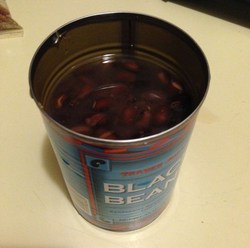
While canned cooked beans certainly seem to maintain their nutritional value, beans in this form also come with significantly more sodium compared to dried beans.17
For this reason, it’s recommended that one purchase reduced- or no-salt varieties, or rinse beans thoroughly before cooking. The challenge with that is that you have little control over how beans from fast food establishments are prepared.18
Soy and Soy Foods
According to Messina, et al., soy intake among vegetarians tends to be higher compared to intakes among nonvegetarians.19
For soy protein specifically, Western vegans get about 10 to 12 g/day, whereas non-vegan Westerners get about half that.19
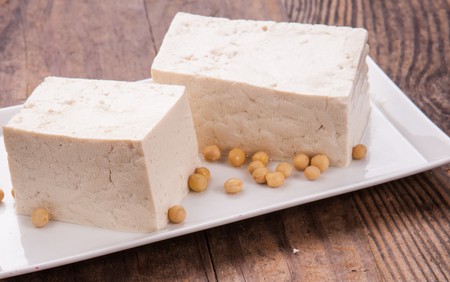
According to an analysis of AHS-2 participants, race-, age-, and sex-adjusted intakes of meat analogs and soy foods showed large differences between vegans and non-vegetarians—about 202 g/day and 88.1 g/day for vegans and nonvegetarians, respectively.8
Why does soy intake matter when it comes to blood pressure?
One meta-analysis which included 27 RCTs showed subjects undergoing a soy protein dietary intervention to experience reductions of 2.21 mm Hg and 1.44 mm Hg in systolic BP and diastolic BP, respectively as compared with the non-soy protein control group.20
Why Are Soy Foods Anti-Hypertensive?
The underlying mechanism by which soy protein influences BP remains unknown. As with nuts and seeds, it could be any number of bioactive plant compounds that account for the protective effects.
Soy foods and food products contain isoflavones and proteins with high amounts of arginine (an amino acid we’ll touch on in a bit). Arginine is a precursor to the famous vasodilator nitrous oxide (NO) while isoflavones are thought to potentially improve the bioavailability of and/or stimulate the biosynthesis of NO.21-25
Food Components
Plant Protein
Protein source—plant vs. animal—seems to have a significant influence on BP.
One analysis by Elliott, P., et al. on protein intake and blood pressure found plant protein intake to be associated with a 2.1 mm Hg drop in systolic BP.26
Observational studies have made similar findings. For example, one study of a Spanish cohort found vegetable protein to be inversely associated with a reduced risk of hypertension.27
Another found higher plant protein intake to be associated with BP reduction. In this study, Wang, et al. concluded: “increased intake of plant protein may be useful as a means to prevent and treat hypertension.”28
Similarly, a Dutch study found an inverse association between plant protein consumption and blood pressure.29
Other longitudinal data have found plant protein to be associated with reduced hypertension risk and reductions in blood pressure.30,31
Soy Protein May Offer Unique Benefits
According to one meta-analysis from 2011, soy protein isolate was found to reduce BP by 2.2 mm Hg and 1.4 mm Hg for systolic and diastolic BP, respectively.32,33
It’s thought that this may be explained by the isoflavones found in soy protein.34,33
Specific Amino Acids
Many studies have shown plasma concentrations and total intakes of specific amino acids to differ between vegetarian and omnivore groups.35,36
Amino acids of interest are the AAs that interact one way or another with arginine—the precursor to the vasodilator NO.
Higher Levels of Glutamic Acid
It turns out that glutamic acid is a precursor to arginine and for this reason may help reduce blood pressure. That’s right, it’s the precursor (GA) to the precursor (Arg) to the precursor (NO) to low blood pressure.23,24
One study found high intakes of glutamic acid (4.7% of total protein) to be associated with a 1.5 mm Hg reduction in systolic blood pressure.37
The same study (INTERMAP) found glutamic acid to be associated with lower levels of systolic blood pressure, independently of other AAs. I.e. study results seemed to confirm the glutamic acid-BP relationship even with the other amino acids in the model.37
Vegans/Vegetarians and Glutamic Acid
The significance to the vegan diet lies in the findings of the INTERMAP study by Stamler et al., wherein glutamic acid intake was higher in folks getting most of their protein from plant-based sources compared to those consuming mostly animal-based protein.37
Lower Lysine to Arginine Ratios
As we know, arginine is important for NO production needed in blood pressure regulation (via vasodilation). Well, lysine competes with arginine for transport into the cell. The more lysine you consume, the harder it is to absorb arginine.
Don’t get me wrong, we need lysine for a number of functions in the body and lysine deficiency comes with its own set of problems. But, arginine deficiency is bad news when it comes to blood pressure, and is associated with vasoconstriction.38-40
Vegans/Vegetarians and Lysine
In the EPIC-Oxford study, plasma AA concentrations were compared between vegetarians and omnivores in 392 men, between the ages of 30 and 49 years.23,24
Compared to omnivores, vegans had higher levels of glycine and alanine, but lower levels of tryptophan, tyrosine, methionine, and lysine.41
For this reason, it’s thought that lysine/arginine ratios may exert a strong influence on the BP-lowering properties of plant-based diets. As for why vegans have lower lysine levels, proteins found in plant foods tend to have lower levels of lysine relative arginine than proteins found in animal products.42
Lower Methionine Intake
One rather long-term (2-year) prospective cohort study of 92 subjects showed increased dietary methionine and alanine intakes to be associated with elevated BP.43
This is because methionine is a precursor to homocysteine which increases BP by increasing levels of what’s known as “asymmetric dimethylarginine.” Asymmetric dimethylarginine is a naturally occurring compound found in blood plasma that’s a metabolic by-product of protein modification in all human cells.
Anyway, asymmetric dimethylarginine is a competitive inhibitor of NO and thus can inhibit vasodilation.44
Vegans/Vegetarians and Methionine
Methionine is scarce in plant protein, but abundant in animal protein.45
For this reason, diets that derive most protein from plant sources tend to have a lower methionine content compared to diets rich in animal-based protein.
Keep in mind that the relationship between plasma homocysteine and methionine is yet to be fully understood. This is just one way in which plant proteins are thought to be anti-hypertensive.
Lower Alanine Intakes
As mentioned above, many studies including the one by Tuttle et al., have found increased dietary alanine intakes to be associated with elevated BP.43
Also, the INTERMAP study involved metabolic phenotyping which showed urinary alanine excretion to be associated with higher BP.46
Vegans/Vegetarians and Alanine
Plant-based protein tends to have less alanine content compared to animal-based protein.
The INTERMAP study also found dietary alanine to be higher in folks consuming a largely omnivorous diet compared to those consuming a mostly vegetarian diet.26
Other Amino Acids of Interest
Other AAs have been identified as potentially playing a role in the effects of plant and animal proteins on BP.
Specifically, leucine, tyrosine, and histidine.47,48
The study by Jenning et al. produced findings I find very interesting. It looked at intake of specific AAs and their association with arterial stiffness. The association between blood pressure and the various AAs examined indicated that the effects of a given AA may depend on whether it was of plant or animal origin.47
Specifically, there was a significant interaction between AA intakes and protein source, with higher intakes of AAs from vegetable sources being associated with lower central BP.47
It’s interesting to me that a given AA can confer positive or negative effects depending on the protein from which it came.
However, little is known about the role of these amino acids in terms of their effects on blood pressure, so it’s not worth going into detail.
Sodium
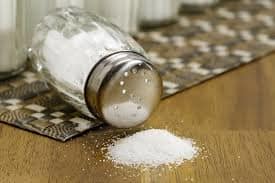
Dietary guidelines for the general public typically include sodium restriction based on clinical and epidemiological evidence for its relationship to blood pressure. For example, a large meta-analysis including 107 RCTs found a clear and strong dose-response relationship between blood pressure and reduced sodium intake.49
In fact, a mere 2.3 g sodium reduction (per day) was found to reduce BP by 3.82 mmHg.
This is because dietary sodium increases blood pressure, and may also impair arterial function and increase vascular resistance.
Unfortunately, benefits in the area of sodium restriction don’t seem to extend to non-vegan vegetarians (as a group).
It’s true that some studies have revealed vegetarians to have lower sodium intakes compared to omnivorous diets.50,51
However, sodium intake among vegetarians remains unclear as other studies have reported no clear differences in sodium intake between vegetarians and omnivores.52
In some cases, it’s been reported that vegetarians may actually have higher sodium intakes than omnivores.53
Other studies have shown little to no difference in sodium intake between the two groups.54-57
As for vegans, it’s a different story. In a comparison of nutritional quality between vegans, vegetarians, and omnivores, Clarys, et al. stated, “Sodium intake in vegans is less than half of the omnivorous intake.”51
Potassium
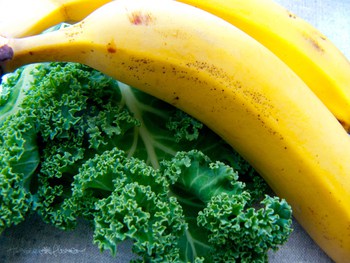
Potassium is ubiquitous in fruits and vegetables, and as you probably know, potassium may lower blood pressure.58
One meta-analysis of RCTs showed potassium supplementation to decrease BP in folks following an omnivorous diet.52,4,7
How Do Sodium and Potassium Affect Blood Pressure
Sodium is responsible for a lot of bodily processes from muscle contraction to nerve conduction. As for our purposes, it’s responsible for acid-base balance, intracellular osmotic pressure, and water balance. Eating too much reduces the kidney’s ability to remove water which raises blood pressure.
Potassium regulates extracellular osmotic pressure and fluid balance. It helps lower blood pressure by balancing out the effects of salt. High intakes of potassium also increase vasodilation, renal reabsorption, and glomerular filtration rate (GFR).59-61
Antioxidants
Vitamin C seems to help lower blood pressure even in isolation. One meta-analysis of 29 RCTs found a median vitamin C dose of 500 mg per day over 8 weeks (median duration of interventions) showed pooled changes in blood pressure of −3.84 mm Hg and −1.48 mm Hg in systolic and diastolic BP, respectively.6
It seems that vitamin C may accomplish this via increasing NO bioavailability and vasodilation.62,63
The antioxidant capacity of fruits and vegetables is due to more than just the presence of vitamin C.
A 6-month clinical trial found increased consumptions of fruits and veggies to be associated with increased intakes of vitamin C as well as carotenoids such as alpha- and beta-carotene, lutein, and β-cryptoxanthin.64
In comparing a higher consumption group with a lower consumption group, John, J.H. et al. found subjects consuming more fruits and veggies to experience significant BP reductions—4.0 mm Hg and -1.5 mm Hg for systolic and diastolic BP, respectively.64
Vegans/Vegetarians and Antioxidants
Vitamin C is omnipresent in fruits and veggies and, as such, vegans and vegetarians tend to get more than the general population.
According to a study of antioxidant status in vegetarians vs. omnivores, measurements of blood levels of antioxidants showed vegetarian diets to maintain higher antioxidant vitamin status—specifically, vitamins C, E, and beta-carotene.65
A Note on Fiber
It turns out high fiber foods tend to be associated with lower BP more so than fiber in isolation.
For example, a meta-analysis of 25 RCTs showed dietary fiber supplementation to be associated with a nonsignificant reduction blood pressure of −1.15 mm Hg and −1.65 mm Hg for systolic and diastolic BP, respectively.66
However, the effects were a bit stronger and more statistically significant in hypertensive adults compared to normotensive adults.66
Contrast that with dietary fiber acquired from whole food sources such as legumes as discussed above. Dietary fiber is a primary constituent of legumes and bean-based products which have been shown to exert BP-lowering effects.67
One Major Caveat: Vitamin B12
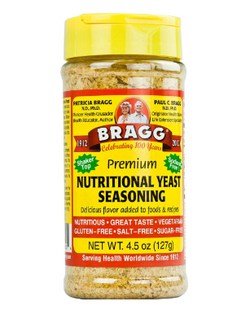
Unfortunately, plant foods do not contain the essential nutrient, vitamin B12 and, as a result, some vegans and vegetarians (those not ensuring intake of B12 from supplements and fortified sources) have lower intakes and blood levels of vitamin B12 compared to omnivores.68,69
Many experts believe this to at least in part account for vegan and vegetarian study results showing a lack of cardioprotection. While it’s true that many studies have found vegan diets to have protective effects against CVD, others rendered conflicting results.
For example, a study by Woo et al. (2014) found Chinese vegetarians to have suboptimal B12 levels combined with normal to high levels of salt intake—apparently, not a good combination. The study showed that vegan diets can actually have adverse effects on arterial endothelial function and what’s known as “carotid intima-media thickness”—a measurement of the thickness of the innermost two layers of the carotid artery walls.69
This is thought to be because B12 deficiency tends to result in increased levels of homocysteine (an independent risk factor for CVD), which are associated with dysfunction of the arterial endothelium.70
This is a shame, because as we know vegan diets offer many protections against developing CVD, so when you fail to get enough B12 you could be flushing all the life-extending benefits down the drain. You’re so close to improving/maintaining heart health, but so far at the same time.
One researcher Pawlak suggested that B12 deficiency may reduce or cancel out the benefits conferred by vegetarian diets on preventing CVD.71
Vegans and even vegetarians should really make an effort to supplement B12 and other nutrients that are less abundant in plant-based diets.
That sums it up for now. My next article on blood pressure will probably hypertension prevalence among vegans and vegetarians.
Until next time.
References
- Li, B., Li, F., Wang, L., Zhang, D., 2016. Fruit and
vegetables consumption and risk of hypertension: ametaanalysis . J. Clin. Hypertens. 18 (5), 468–476 (Greenwich). - Appel, L.J., Moore, T.J., Obarzanek, E., et al., 1997. A clinical trial of the effects of dietary patterns on blood pressure. DASH Collaborative Research Group. N. Engl. J. Med. 336 (16), 1117–1124.
- Sacks, F.M., Svetkey, L.P., Vollmer, W.M., et al., 2001. Effects on blood pressure of reduced dietary sodium and the dietary approaches to Stop
hypertension (DASH) diet. DASH-sodium collaborative research group. N. Engl. J. Med. 344 (1), 3–10. - Whelton, P.K., He, J., Culter, J.A., et al., 1997. Effects of oral potassium on blood pressure. Meta-analysis of randomized controlled clinical trials. JAMA 277 (20), 1624–1632.
- Toh, J.Y., Tan, V.M., Lim, P.C., Lim, S.T., Chong, M.F., 2013. Flavonoids from fruit and vegetables: a focus on cardiovascular risk factors. Curr. Atheroscler. Rep. 15 (12), 368.
- Juraschek, S.P., Guallar, E., Appel, L.J., Miller 3rd, E.R., 2012. Effects of vitamin C supplementation on blood pressure: a meta-analysis of randomized controlled trials. Am. J. Clin. Nutr. 95 (5), 1079–1088.
- Aburto, N.J., Hanson, S., Gutierrez, H., Hooper, L., Elliott, P., Cappuccio, F.P., 2013. Effect of increased potassium intake on cardiovascular risk factors and disease: systematic review and meta-analyses. BMJ 346, f1378.
- Orlich, M.J., Jaceldo-
Siegl , K., Sabate, J., Fan, J., Singh, P.N., Fraser, G.E., 2014. Patterns of food consumption among vegetarians and non-vegetarians. Br. J. Nutr. 112 (10), 1644–1653. - Mohammadifard, N., Salehi-Abargouei, A., Salas-
Salvado , J., Guasch-Ferre, M., Humphries, K., Sarrafzadegan, N., 2015. The effect of tree nut, peanut, and soy nut consumption on blood pressure: a systematic review and meta-analysis of randomized controlled clinical trials. Am. J. Clin. Nutr. 101 (5), 966–982. - Allen, L.H., 2008. Priority areas for research on the intake, composition, and health effects of tree nuts and peanuts. J. Nutr. 138 (9), 1763S–1765S.
- Altorf-van der Kuil W, Engberink MF, Brink EJ, van Baak MA, Bakker SJL, Navis G, van’t Veer P, Geleijnse JM. 2010. Dietary protein and blood pressure: A systematic review. PLoS One 5 (8):e12102.
- McDougall J. 2016. The Healthiest Diet on the Planet: Why the Foods You Love—Pizza, Pancakes, Potatoes, Pasta, and More—Are the Solution to Preventing Disease and Looking and Feeling Your Best. New York: HarperCollins.
- Jayalath VH, de Souza RJ, Sievenpiper JL, Ha V, Chiavaroli L, Mirrahimi A, Di Buono M, Bernstein AM, Leiter LA, Kris-Etherton PM. 2014. Effect of dietary pulses on blood pressure: A systematic review and meta-analysis of controlled feeding trials. Am J Hypertens 27 (1):56–64.
- He J, Whelton PK. 1999. Effect of dietary fiber and protein intake on blood pressure: A review of epidemiologic evidence. Clin Exp Hypertens 21 (5–6):785–96.
- Bazzano LA, He J, Ogden LG, Loria C, Vupputuri S, Myers L, Whelton PK. 2001. Legume consumption and risk of coronary heart disease in US men and women: NHANES I Epidemiologic Follow-Up Study. Arch Intern Med 161 (21):2573–8.
- Papanikolaou Y, Fulgoni VL III. 2008. Bean consumption is associated with greater nutrient intake, reduced systolic blood pressure, lower body weight, and
a smaller waist circumference in adults: Results from the National Health and Nutrition Examination Survey 1999–2002. J Am Coll Nutr 27 (5):569–76. - Zanovec M, O’Neil CE, Nicklas TA. 2011. Comparison of nutrient density and nutrient-
tocost between cooked and canned beans. Food Nutr Sci 2 (02):66. - Greger M, Stone G. 2015. How Not to Die: Discover the Foods Scientifically Proven to Prevent and Reverse Disease. New York: Flatiron Books.
- Messina, M., Nagata, C., Wu, A.H., 2006. Estimated Asian adult soy protein and isoflavone intakes. Nutr. Cancer 55 (1), 1–12.
- Dong, J.Y., Tong, X., Wu, Z.W., Xun, P.C., He, K., Qin, L.Q., 2011a. Effect of
soya protein on blood pressure: a meta-analysis ofrandomised controlled trials. Br. J. Nutr. 106 (3), 317–326. - Squadrito, F., Altavilla, D., Morabito, N., et al., 2002. The effect of the phytoestrogen genistein on plasma nitric oxide concentrations, endothelin-1 levels and
endothelium dependent vasodilation in postmenopausal women. Atherosclerosis 163 (2), 339–347. - Chin-Dusting, J.P., Boak, L., Husband, A., Nestel, P.J., 2004. The isoflavone metabolite
dehydroequol produces vasodilatation in human resistance arteries via a nitric oxide-dependent mechanism. Atherosclerosis 176 (1), 45–48. - Luiking, Y.C., Engelen, M.P., Deutz, N.E., 2010. Regulation of nitric oxide production in health and disease. Curr. Opin. Clin. Nutr. Metab. Care 13 (1), 97–104.
- Urschel, K.L., Rafii, M., Pencharz, P.B., Ball, R.O., 2007. A
multitracer stable isotope quantification of the effects of arginine intake on whole body arginine metabolism in neonatal piglets. Am. J. Physiol. Endocrinol. Metab. 293 (3), E811–E818. - Dong, J.Y., Qin, L.Q., Zhang, Z., et al., 2011b. Effect of oral L-arginine supplementation on blood pressure: a meta-analysis of randomized, double-blind, placebo-controlled trials. Am. Heart J. 162 (6), 959–965.
- Elliott, P., Stamler, J., Dyer, A.R., et al., 2006. Association between protein intake and blood pressure: the INTERMAP Study. Arch. Intern. Med. 166 (1), 79–87.
- Alonso, A., Beunza, J.J., Bes-Rastrollo, M., Pajares, R.M., Martinez-Gonzalez, M.A., 2006. Vegetable protein and fiber from cereal are inversely associated with the risk of hypertension in a Spanish cohort. Arch. Med. Res. 37 (6), 778–786.
- Wang, Y.F., Yancy Jr., W.S., Yu, D., Champagne, C., Appel, L.J., Lin, P.H., 2008. The relationship between dietary protein intake and blood pressure: results from the PREMIER study. J. Hum. Hypertens. 22 (11), 745–754.
- Altorf-van der Kuil, W., Engberink, M.F., Vedder, M.M., Boer, J.M., Verschuren, W.M., Geleijnse, J.M., 2012. Sources of dietary protein in relation to blood pressure in a general Dutch population. PLoS One 7, e30582.
- Stamler, J., Liu, K., Ruth, K.J., Pryer, J., Greenland, P., 2002.
Eight-year blood pressure change inmiddleaged men: relationship to multiple nutrients. Hypertension 39, 1000–1006. - Tielemans, S.M., Kromhout, D., Altorf-van der Kuil, W., Geleijnse, J.M., 2014. Associations of plant and animal protein intake with 5-year changes in blood pressure: the Zutphen Elderly Study. Nutr. Metab. Cardiovasc. Dis. 24, 1228–1233.
- Dong, J.Y., Tong, X., Wu, Z.W., Xun, P.C., He, K., Qin, L.Q., 2011. Effect of
soya protein on blood pressure: a meta-analysis ofrandomised controlled trials. Br. J. Nutr. 106 (3), 317–326. - Hooper, L., Kroon, P.A., Rimm, E.B., Cohn, J.S., Harvey, I., Le Cornu, K.A., Ryder, J.J., Hall, W.L., Cassidy, A., 2008. Flavonoids, flavonoid-rich foods, and cardiovascular risk: a meta-analysis of randomized controlled trials. Am. J. Clin. Nutr. 88, 38–50.
- Liu, X.X., Li, S.H., Chen, J.Z., Sun, K., Wang, X.J., Wang, X.G., Hui, R.T., 2012. Effect of soy isoflavones on blood pressure: a meta-analysis of randomized controlled trials. Nutr. Metab. Cardiovasc. Dis. 22, 463–470.
- Abdulla, M., Andersson, I., Asp, N.G., et al., 1981. Nutrient intake and health status of vegans. Chemical analyses of diets using the duplicate portion sampling technique. Am. J. Clin. Nutr. 34 (11), 2464–2477.
- Krajcovicova-Kudlackova, M., Simoncic, R., Bederova, A., Babinska, K., Beder, I., 2000. Correlation of carnitine levels to methionine and lysine intake. Physiol. Res. 49 (3), 399–402.
- Stamler, J., Brown, I.J., Daviglus, M.L., et al., 2009. Glutamic acid, the main dietary amino acid, and blood pressure: the INTERMAP study (International Collaborative Study of Macronutrients, Micronutrients and Blood Pressure). Circulation 120 (3), 221–228.
- Luiking, Y.C., Deutz, N.E., 2007. Biomarkers of arginine and lysine excess. J. Nutr. 137 (6 Suppl. 2), 1662S–1668S.
- Li, X., Bazer, F.W., Gao, H., et al., 2009. Amino acids and gaseous signaling. Amino Acids 37 (1), 65–78.
- Lorin, J., Zeller, M., Guilland, J.C., Cottin, Y., Vergely, C., Rochette, L., 2014. Arginine and nitric oxide synthase: regulatory mechanisms and cardiovascular aspects. Mol. Nutr. Food Res. 58 (1), 101–116.
- Schmidt, J.A., Rinaldi, S., Scalbert, A., et al., 2016. Plasma concentrations and intakes of amino acids in male meat-eaters, fish-eaters, vegetarians and vegans: a cross-sectional analysis in the EPIC-Oxford cohort. Eur. J. Clin. Nutr. 70 (3), 306–312.
- Vega-Lopez, S., Matthan, N.R., Ausman, L.M., et al., 2010. Altering dietary lysine
:arginine ratio has little effect on cardiovascular risk factors and vascular reactivity in moderately hypercholesterolemic adults. Atherosclerosis 210 (2), 555–562. - Tuttle, K.R., Milton, J.E., Packard, D.P., Shuler, L.A., Short, R.A., 2012. Dietary amino acids and blood pressure: a cohort study of patients with cardiovascular disease. Am. J. Kidney Dis. 59 (6), 803–809.
- Stuhlinger, M.C., Oka, R.K., Graf, E.E., et al., 2003. Endothelial dysfunction induced by
hyperhomocyst (e)inemia :role of asymmetric dimethylarginine. Circulation 108 (8), 933–938. - McCarty, M.F., Barroso-Aranda, J., Contreras, F., 2009. The low-methionine content of vegan diets may make methionine restriction feasible as a life extension strategy. Med. Hypotheses 72 (2), 125–12
- Holmes, E., Loo, R.L., Stamler, J., et al., 2008. Human metabolic phenotype diversity and its association with diet and blood pressure. Nature 453 (7193), 396–400.
- Jennings, A., Macgregor, A., Welch, A., Chowienczyk, P., Spector, T., Cassidy, A., 2015. Amino acid intakes are inversely associated with arterial stiffness and central blood pressure in women. J. Nutr. 145, 2130–2138.
- Niu, Y.C., Feng, R.N., Hou, Y., Li, K., Kang, Z., Wang, J., Sun, C.H., Li, Y., 2012. Histidine and arginine are associated with inflammation and oxidative stress in obese women. Br. J. Nutr. 108, 57–61.
- Mozaffarian, D., Fahimi, S., Singh, G.M., et al., 2014. Global sodium consumption and death from cardiovascular causes. N. Engl. J. Med. 371 (7), 624–634.
- Larsson, C.L., Johansson, G.K., 2002. Dietary intake and nutritional status of young vegans and omnivores in Sweden. Am. J. Clin. Nutr. 76 (1), 100–106.
- Clarys, P., Deliens, T., Huybrechts, I., et al., 2014. Comparison of nutritional quality of the vegan, vegetarian, semi-vegetarian,
pesco-vegetarian and omnivorous diet. Nutrients 6 (3), 1318–1332. - Rizzo, N.S., Jaceldo-Siegl, K., Sabate, J., Fraser, G.E., 2013. Nutrient profiles of vegetarian and nonvegetarian dietary patterns. J. Acad. Nutr. Diet 113 (12), 1610–1619.
- Woo, J., Kwok, T., Ho, S.C., Sham, A., Lau, E., 1998. Nutritional status of elderly Chinese vegetarians. Age Ageing 27 (4), 455–461.
- Pettersen, B.J., Anousheh, R., Fan, J., Jaceldo-
Siegl , K., Fraser, G.E., 2012. Vegetarian diets and blood pressure among white subjects: results from the Adventist Health Study-2 (AHS-2). Public Health Nutr. 15 (10), 1909–1916. - Appleby, P.N., Davey, G.K., Key, T.J., 2002. Hypertension and blood pressure among meat eaters, fish eaters, vegetarians and vegans in EPIC-Oxford. Public Health Nutr. 5 (5), 645–654.
- Cade, J.E., Burley, V.J., Greenwood, D.C., 2004. Group UK Women’s cohort study
sterring group. The UK Women’s cohort study: comparison of vegetarians, fish-eatersand meat-eaters. Public Health Nutr. 7 (7), 871–878. - Reese, D.R., Chong, C.W., Swintosky, J.V., 1960. Physical properties of lipids used in pharmacy. 1. Screening raw materials via photomicrography. J. Am. Pharm. Assoc. 49 (2), 85–89.
- Whelton, P.K., He, J., 2014. Health effects of sodium and potassium in humans. Curr. Opin. Lipidol. 25, 75–79. http://dx.doi.org/10.1097/MOL.0000000000000033.
- McDonough, A.A., Nguyen, M.T., 2012. How does potassium supplementation lower blood pressure? Am. J. Physiol. Ren. Physiol. 302 (9), F1224–F1225.
- Elliott, P., Kesteloot, H., Appel, L.J., et al., 2008. Dietary phosphorus and blood pressure:
international study of macro- and micro-nutrients and blood pressure. Hypertension 51 (3), 669–675. - Kass, L., Weekes, J., Carpenter, L., 2012. Effect of magnesium supplementation on blood pressure: a
metaanalysis . Eur. J. Clin. Nutr. 66 (4), 411–418. - Huang, A., Vita, J.A., Venema, R.C., Keaney Jr., J.F., 2000. Ascorbic acid enhances endothelial nitric-oxide synthase activity by increasing intracellular tetrahydrobiopterin. J. Biol. Chem. 275 (23), 17399–17406.
- Suematsu, N., Ojaimi, C., Recchia, F.A., et al., 2010. Potential mechanisms of low-sodium diet-induced cardiac disease: superoxide-NO in the heart. Circ. Res. 106 (3), 593–600.
- John, J.H., Ziebland, S., Yudkin, P., et al., 2002. Effects of fruit and vegetable consumption on plasma antioxidant concentrations and blood pressure: a
randomised controlled trial. Lancet 359 (9322), 1969–1974. - Rauma AL, Mykkänen H. Antioxidant status in vegetarians versus omnivores. Nutrition. 2000;16(2):111-9.
- Whelton, S.P., Hyre, A.D., Pedersen, B., Yi, Y., Whelton, P.K., He, J., 2005. Effect of dietary fiber intake on blood pressure: a meta-analysis of randomized, controlled clinical trials. J. Hypertens. 23 (3), 475–481.
- Lee YP, Puddey IB, Hodgson JM. 2008. Protein,
fibre and blood pressure: Potential benefit of legumes. Clin Exp Pharmacol Physiol 35 (4):473–6. - Craig, W.J., Mangels, A.R., 2009. American Dietetic A. Position of the American Dietetic
association : vegetarian diets. J. Am. Diet. Assoc. 109 (7), 1266–1282. - Woo, K.S., Kwok, T.C., Celermajer, D.S., 2014. Vegan diet, subnormal vitamin B-12 status
and cardiovascular health. Nutrients 6 (8), 3259–3273. - Homocysteine Studies Collaboration, 2002. Homocysteine and risk of ischemic heart disease and stroke: a meta-analysis. JAMA 288 (16), 2015–2022.
- Pawlak, R., 2015. Is vitamin B12 deficiency a risk factor for cardiovascular disease in vegetarians? Am. J. Prev. Med. 48 (6), e11–26.
- Ajay Machha and Alan N. Schechter. Dietary nitrite and nitrate: a review of potential mechanisms of cardiovascular benefits. Eur J Nutr. 2011;50(5): 293–303.

